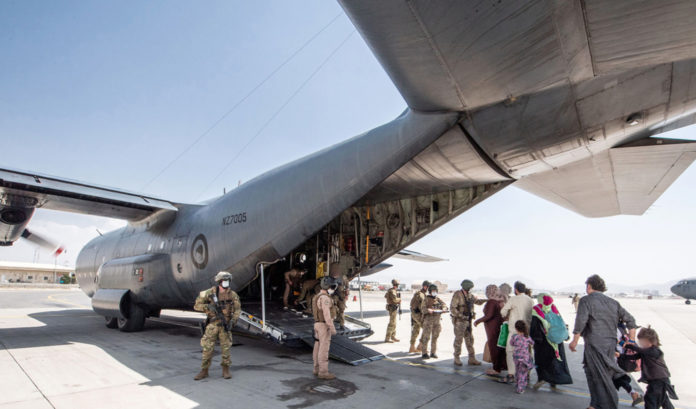From the heat of Afghanistan to the chill of Antarctica, a Royal New Zealand Air Force C-130 Hercules has made the Air Force’s first flight of the season to the South Pole, carrying personnel and cargo in support of Antarctica New Zealand.
The job was assigned to NZ7005, to be conducted in very different conditions to the aircraft’s Afghan assignment.
In the space of a month NZ7005 has travelled north to the heat of the Middle East to collect evacuees from Afghanistan, and now down south to Antarctica and its frigid temperatures.
“In the hot, dusty environment you’re worried about the avionics systems, you’re worried where the dust is getting in respect of engines and propellers in particular. The heat and the dust cause a unique set of challenges, which is at the opposite end of the spectrum to Antarctica, with its cold,” said While both are desert areas, each region has opposite environmental conditions that the aircraft responds to differently, Squadron Leader Michael Bunting.
“Maintaining an aircraft in 45degC heat is a real challenge.”
Squadron Leader Bunting said steps had to be taken to look after personnel working in such extreme conditions.
“Obviously we’re super-concerned about heat stroke and out there we had no real shelter while working in the desert. Frequently the thermometer was well above 40degC. There were massive challenges, complicated by COVID-19, requiring us to wear masks and gloves.’’
At the other end of the temperature spectrum, in Antarctica, maintainers wear multiple layers of clothing, he said.
“You end up looking like the Michelin Man. Trying to do any task that requires hand skills is that much more complicated. In both cases you’re trying to limit the exposure of the maintainers to that environment, so that makes it a significant challenge, to the people themselves, not just the aircraft.”
Maintainer Sergeant Dayne Van Stee said they endeavoured to get as much ready on the aircraft before going to locations with extreme temperatures.
“In the Middle East the sand and dust just gets in everything so we have to do extra inspections and cleaning,” he said.
At the other end of the mercury, the Antarctic cold affects rubber seals on the aircraft, causing them to shrink, resulting in fuel and hydraulic liquid leaks.
“So before we go, we check and top up all the fluids to ensure we have the best start,’’ he said.
COVID-19 protocols have imposed extra requirements to protect both passengers and crew. These have added challenges, including long 19-hour days to the ice; the aircraft no longer overnights in Antarctica but returns the same day.
However, the aircraft and 40 Squadron personnel have proved more than equal to the task.



